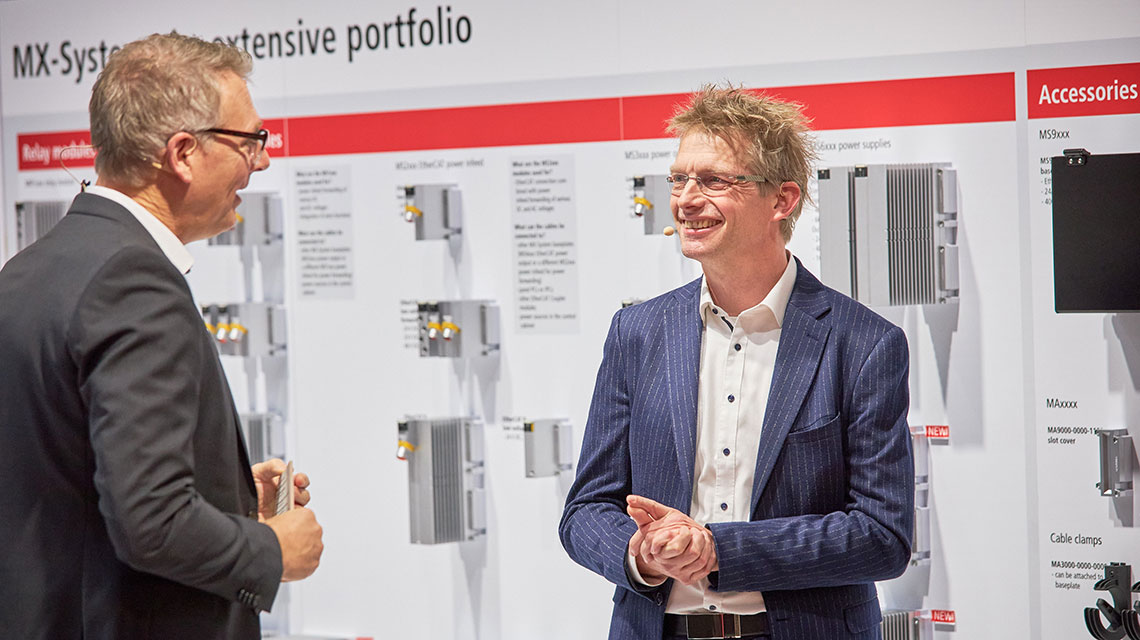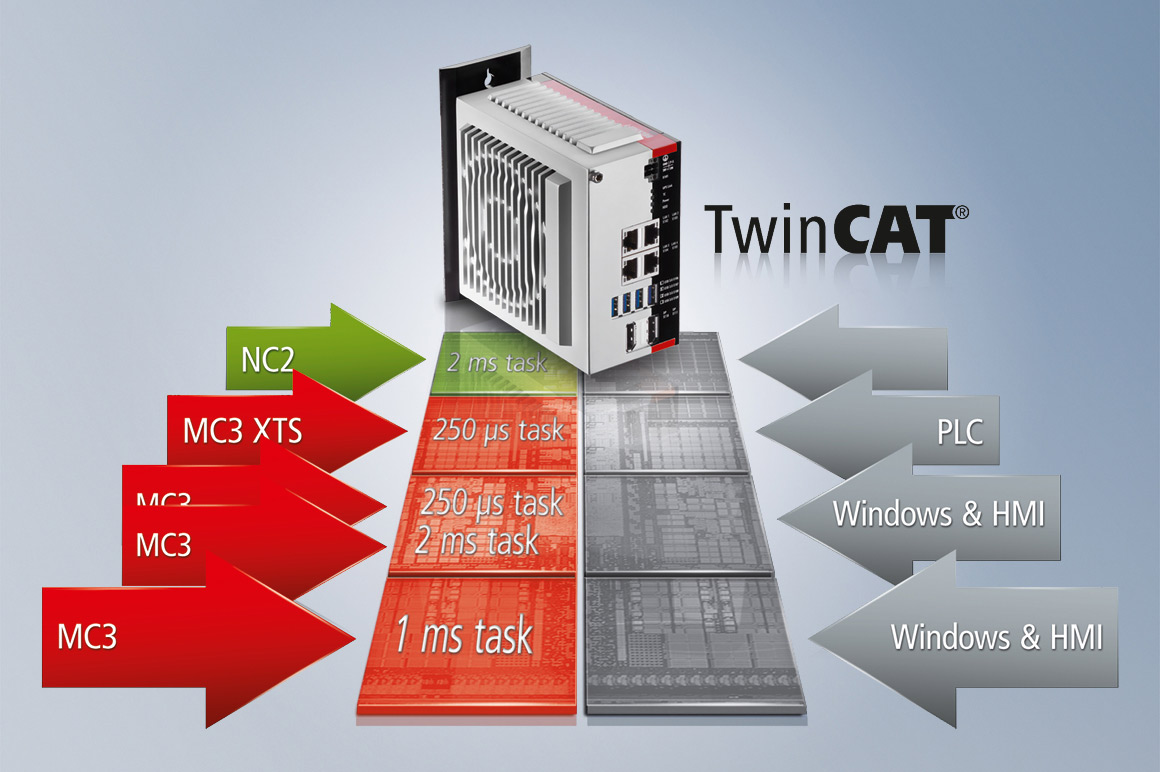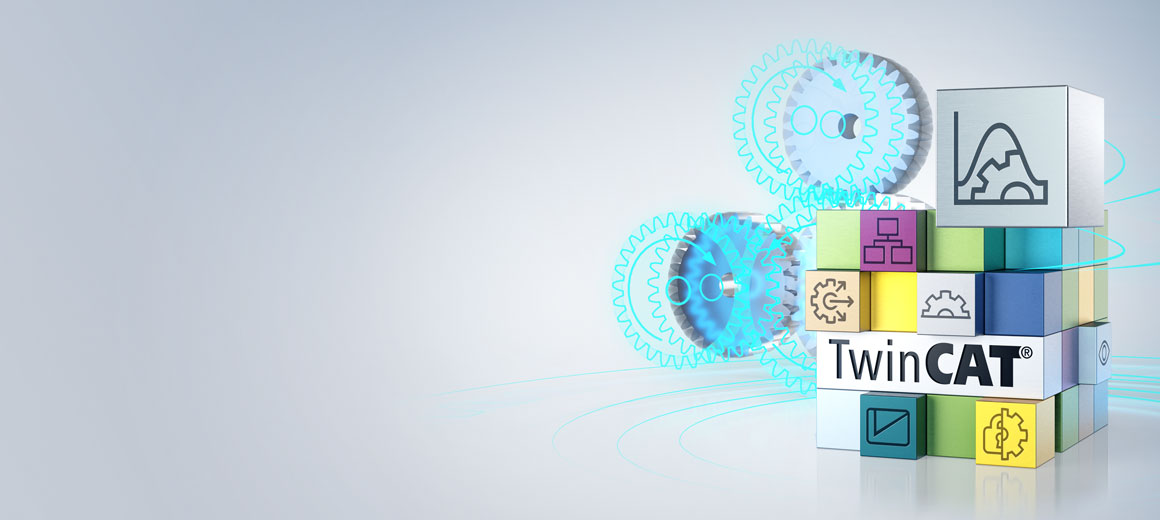


Motion control is firmly established as an essential component of TwinCAT and is successfully used in many projects across a wide range of industries. TwinCAT MC3 represents the next generation of motion control. All the highlights of the previous TwinCAT NC2 motion control solution can also be found in the latest generation of TwinCAT MC3.
The most essential features of TwinCAT MC3 include:
- complete system integration
- scalable performance
- hardware independence
A further highlight is that there is no longer a fixed limit on the number of programmable axes in the new generation. These impressive features make TwinCAT MC3 a high-performance tool in the field of motion software solutions.
Advantages of TwinCAT MC3
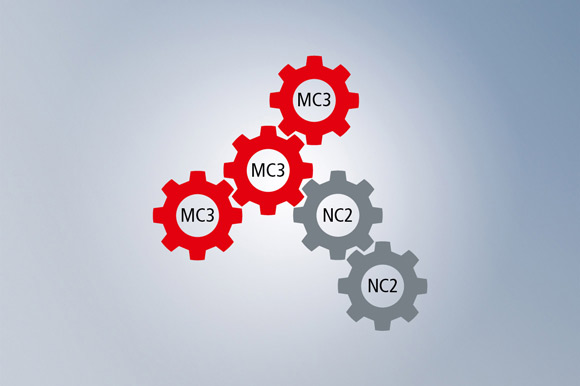
The seamless integration of TwinCAT MC3 into the TwinCAT system means that the motion control solution can not only be operated in parallel with the other TwinCAT functions in one system, but can also interact with the other TwinCAT functions.
Notable highlights are as follows:
- TwinCAT MC3 can be operated in parallel with the previous NC2 motion control solution, and MC3 axes can also be coupled with existing NC2 axes. This makes it possible to implement new machine components with TwinCAT MC3 without having to adapt the existing machine components that use NC2.
- The TE5950 TwinCAT 3 Drive Manager 2 supports the commissioning of Beckhoff drive solutions and, as is typical for NC2, can also automatically create MC3 configurations and MC3 axes with standard parameters.
- TwinCAT Scope is a powerful diagnostic tool that can be used to record movements and dynamics and then analyze them manually using various toolboxes. Since the software is fully compatible with TwinCAT MC3, it is possible to record positions and movements of both NC2 and MC3 axes, display the information in YT charts, and analyze the data.
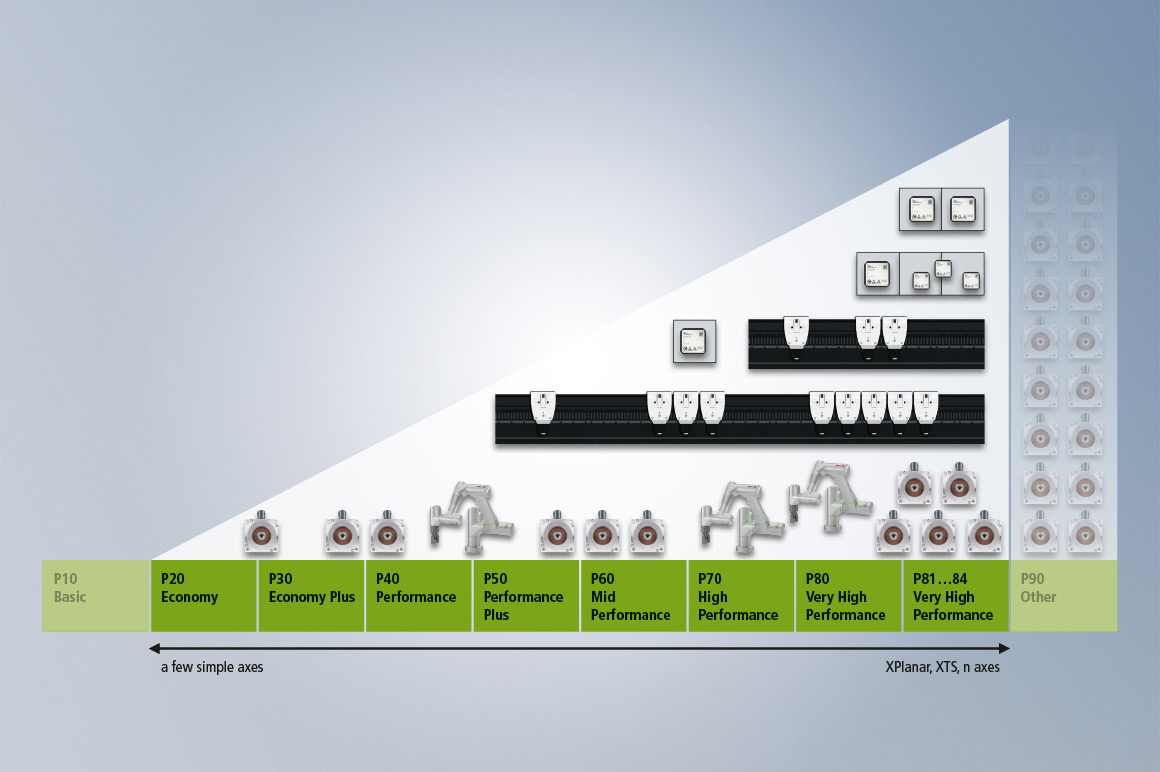
TwinCAT MC3 has a new modular architecture, which maximizes the utilization of the control computer’s CPU performance through its comprehensive multi-core and multi-task support:
Multi-core support
TwinCAT MC3 can be distributed to several CPU cores as required. Movements can be synchronized across all CPU cores in use.
Multi-task support
Axes with different cycle times can be operated on a single CPU core, precisely matching the speeds and tasks of the respective axes. This facilitates optimum utilization of a CPU core, as the ‘fastest’ axis does not necessarily dictate the clock rate for all axes. In this way, the axes of a conveyor belt with a delta picker can be operated with a cycle time of 1 ms to ensure that the workpieces are picked up quickly, while the axes for width adjustment of the conveyor belt are operated with a cycle time of 4 ms on the same CPU core.
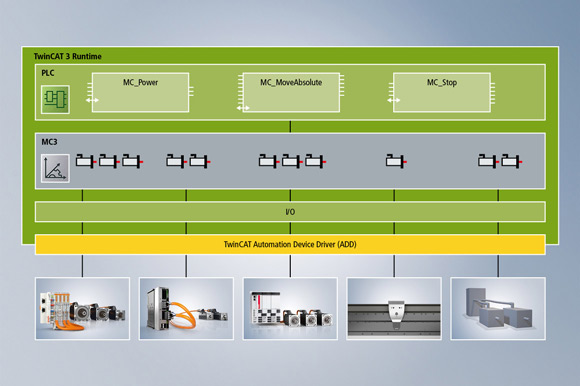
As with the previous motion control solution, TwinCAT MC3 abstracts the axes into axis objects that separate the hardware from the programming process. This creates hardware independence, the advantages of which can be seen in the following features:
Independence through axis simulation
Axes can be simulated, with the possibility of incorporating a combination of real and simulated axes within a project. Switching between the real and simulated axis can be carried out in the configuration with a single click, for both an individual axis and a group of axes. This makes it possible to program the axes without a connection to the hardware and reduces the commissioning time on the real machine.
Independence from the drive system
A wide variety of drive systems, such as servo, stepper, and DC motors, as well as the XTS product transport system, are abstracted equally into axis objects to allow for uniform programming. Programming is facilitated by the TwinCAT Tc3_Mc3 library, which offers PLCopen-compliant function blocks that users may recognize from NC2. With TwinCAT MC3, hydraulic axes are now also supported and fully integrated. General programming is carried out using the same PLCopen-compliant function blocks that are used for electric axes. There is also a library with supplementary function blocks for special fluid power functionalities.
Free choice of bus system
TwinCAT is an open control platform that supports the EtherCAT high-performance communication system as well as all other common fieldbus systems.
